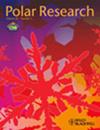在动物学和野生环境中进行的白鲸行为研究之间的协同作用
IF 1.3
4区 地球科学
Q3 ECOLOGY
引用次数: 1
摘要
对圈养白鲸的行为观察补充并扩展了人们在野外对该物种的了解。基于水族馆的研究为许多主题提供了更精细的尺度特异性,包括该物种特有的季节性繁殖模式,以及似乎是该物种行为谱系重要组成部分的社会性行为。一个例子是,男性在很小的时候就开始形成强烈的社交倾向。此外,小牛的详细行为里程碑已被记录在案,其方式扩展了从野生种群中收集的数据。其中包括与母亲的游泳姿势、与母亲的分离/团聚以及其他社交互动和玩耍。与野生环境相比,圈养环境中对白鲸产妇护理的特征也进行了更多的研究,特别是在护理行为、产妇风格的个体差异和异母护理方面。在动物学环境中受到科学审查的其他主题包括个体差异和行为偏侧性。因此,由于在这两种环境中进行的研究之间的协同作用,有可能对白鲸的行为生物学有更深入的了解。本文章由计算机程序翻译,如有差异,请以英文原文为准。
Synergy between behavioural research on beluga whales (Delphinapterus leucas) conducted in zoological and wild settings
Behavioural observations of captive beluga whales have complemented and extended much of what has been learnt about this species in the wild. Aquarium-based research has provided finer-scale specificity for many topics, including the seasonal breeding pattern that is characteristic of this species, as well as socio-sexual behaviour that appears to be an important part of the behavioural repertoire of this species. One example is a strong propensity for male–male social interactions that begin to develop at an early age. In addition, detailed behavioural milestones in calves have been documented in ways that extend that which have been collected from wild populations. These include swim positions with mother, separations/reunions with mother, and other social interactions, and play. Characteristics of beluga maternal care have also been studied more often in captive settings than in the wild, particularly with respect to details pertaining to nursing behaviour, individual differences in maternal style and allomaternal care. Other topics that have received scientific scrutiny in zoological settings include individual differences and behavioural laterality. Thus, a greater understanding of beluga behavioural biology has the potential to emerge as a consequence of synergy between research conducted in the two settings.
求助全文
通过发布文献求助,成功后即可免费获取论文全文。
去求助
来源期刊

Polar Research
地学-地球科学综合
CiteScore
3.20
自引率
5.30%
发文量
22
审稿时长
>12 weeks
期刊介绍:
Since 1982, Polar Research has been the international, peer-reviewed journal of the Norwegian Polar Institute, Norway''s central institution for research, environmental monitoring and mapping of the polar regions. Aiming to promote the exchange of scientific knowledge about the Arctic and Antarctic across disciplinary boundaries, Polar Research serves an international community of researchers and managers. As an open-access journal, Polar Research makes its contents freely available to the general public.
Original primary research papers comprise the mainstay of Polar Research. Review articles, brief research notes, letters to the editor and book reviews are also included. Special issues are published from time to time.
The scope of Polar Research encompasses research in all scientific disciplines relevant to the polar regions. These include, but are not limited to, the subfields of biology, ecology, geology, oceanography, glaciology and atmospheric science. Submissions from the social sciences and those focusing on polar management and policy issues are welcome. Contributions about Antarctica are particularly encouraged.
 求助内容:
求助内容: 应助结果提醒方式:
应助结果提醒方式:


